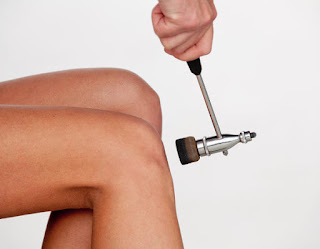 "[...] I want to do it all on my own, but, well, I can't get myself back to Heaven any more than I can get myself up off the floor when I fall.
"[...] I want to do it all on my own, but, well, I can't get myself back to Heaven any more than I can get myself up off the floor when I fall.For a few months this winter, I fell a lot. The combination of an irreparably broken hip, dizzy spells so bad I would forget which way was up, and general muscle weakness will do that to you.
Every time I fell, I eventually had to ask someone to come and pick me up.
I could crawl around my apartment living life at six inches above the ground for hours, and I sometimes did, but I had no power whatsoever to pick myself up off the floor.
I wished I could. I tried, with lots of giggle-worthy results but no success. I watched all the videos on how to get up after a fall, I came up with all sorts of ways to pull myself up -- it wasn't happening. In fact, the only result of all my effort was more time spent on the floor, sometimes with additional injury.
I am, very literally, incapable of redeeming myself from a fall.
Luckily for me, Heavenly Father saw fit to provide me with a "savior" (or twelve). Each time I fell, whenever I was ready to ask for help (or at least accept it when it showed up without my asking), there was someone willing to come and pick me up.
 |
| Elder Hurst had plenty of scriptural references for my troubles. |
No matter what, when I was ready to admit that I couldn't pick myself up and let someone help, someone was there.
No matter how many times I fell, they kept coming. No matter how discouraged I got, no matter how worthless I felt, no matter how long I sat on the floor feeling embarrassed before I asked for help, they came. (And more often than not, they came with a reminder -- "Don't be embarrassed.")
Relying on Christ to redeem me from my spiritual fall is just as hard as relying on other people to pick me up off the floor. Admitting to myself that I can't do it all is hard. Whether it's the 1,000th time I've committed the same stupid sin, something terrible that another person does to me, a sucky thing that happens just because we live in a broken world, or my anxious little heart letting me feel despair... Christ is always there to pick me up. I don't even have to ask. All I have to do is open the door."
--
I'm eternally grateful to these men (and others) for not only cheerfully coming again and again to pick me up, but for pointing me to the Savior who can lift me out of far worse situations.







